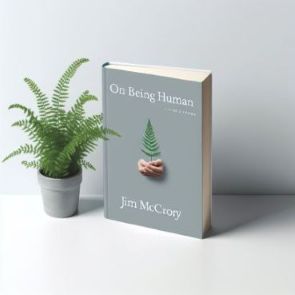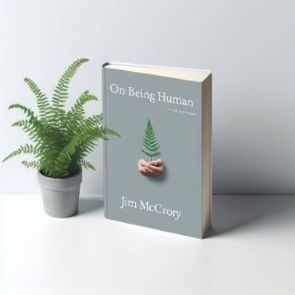The race is not to the swift… For time and chance happen to all.”
Ecclesiastes 9:11 (BSB).

“Silent night, holy night… all is calm, all is bright.”
It was winter, 2010; close to the end of a very difficult year. I was returning from Oban, on Scotland’s west coast, weary from a speaking engagement. I am watching white darkness slide past the train windows Snow had been falling heavily across the Highlands, thick and unrelenting, the kind that bends time and progress. Somewhere near Crianlarich the journey faltered and stopped for hours. Snow piled up on the rails and the time that passed was measured in patience. By the time we reached Glasgow it was close to midnight.
The station was hushed in that peculiar way only large places become when the crowds have gone—vast, echoing, half-asleep. Footsteps sounded louder than they should. Breath steamed in the cold air. And then, tucked away in a shadowed corner, I heard it.
A lone piper.
He stood almost hidden, the lamplight catching the curve of the pipes, the notes rising softly into the cavernous dark. He was playing Silent Night. Not loudly. Not for applause. Just letting the melody breathe into the space, as if the night itself had asked for it.
It was one of those moments that cannot be planned—only received. A gift given by delay, by snow, by circumstances that refused to hurry. The world slowed enough for wonder to slip in.
Silent Night itself began like that—quietly, almost unnoticed.
A century earlier, in a small village called Oberndorf, near Salzburg, peace was something people longed for but scarcely trusted. In that fragile stillness, a young priest named Joseph Mohr walked his parish with a poem in his pocket—a simple meditation he had written years earlier about the birth of Christ. No triumph. No thunder. Just calm. Just trust.
That evening he carried the poem to Franz Xaver Gruber, the village schoolteacher and organist. There was a problem: the church organ was broken. Silent. Useless. Whether mice or damp winter air were to blame hardly mattered. The grand instrument had failed.
So they turned to something smaller.
Gruber set the words to a gentle melody for guitar—an instrument of kitchens and firesides, not sanctuaries. And that night, by candlelight, the song was born. Two voices. One guitar. No choir. No ceremony. Just a fragile offering of peace.
“Silent night, holy night… all is calm, all is bright.”
I cannot help think that God moved these to men to bring comfort to these weary souls during that difficult time in human history. And to the world; for no one there imagined the song would travel far. And yet it did.
It passed from village to village on the lips of wandering singers. It crossed borders and languages, found its way into palaces and barns, into churches and prison camps. It was sung in times of joy and in the long shadows of suffering.
Once, on a frozen Christmas Eve during the First World War, it drifted across trenches—enemy voices meeting in the darkness, a brief and holy ceasefire born of melody.
And still, it comes to us like that.
In stations at midnight. In broken journeys. In unexpected corners of the world where the noise recedes and something gentler dares to speak.
The power of Silent Night has never been in its volume. It does not shout. It does not rush. It reminds us that Christ, the Saviour, entered the world the same way the song entered history—not with spectacle, but with a child, a mother, and a night heavy with promise.
It began in silence.
And sometimes, if the snow is deep enough, and the train runs late enough, and the heart is quiet enough, we can still hear it.
























